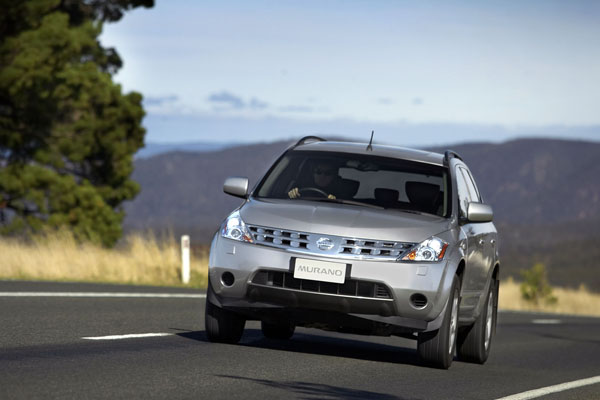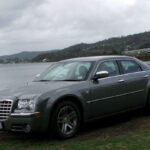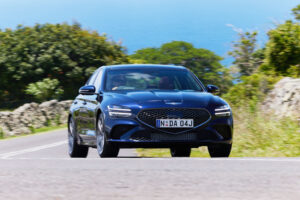
2005 Mazda MX-5
The Mazda MX-5 was launched in Australia in October 1989 and was a hit straight
away thanks to its styling and handling making it a genuine sports car. This is not
simply a hot hatch with added power and some added-on body mods it’s a fair
dinkum full-on sports machine.
In this Used Car Checkout we begin with the almost all-new Mazda MX-5, the NC
series, which arrived Downunder in September 2005.
It was slightly larger than the model it replaced, though clever engineering meant
that weight increases were kept to a minimum. With a couple of minor updates along
the way the NC was sold through until the launch of the fourth generation, the ND in
August 2015.
The ND series took a completely different direction to its predecessors. While the NB
and NC were solid evolutions of the original NA of 1989, the ND designers started on
a fresh new model.
Many MX-5 owners love to drive with the top down even if the weather is
threatening, well aware the soft-top only takes seconds to close, something that can
be done when stopped at a red traffic light. You should have a supple body though,
because a fair bit of upper body twisting is needed.
A folding hardtop roof was introduced in September 2006. It not only works neatly,
but adds a minimum of weight to the car and takes little away from luggage carrying
capacity.
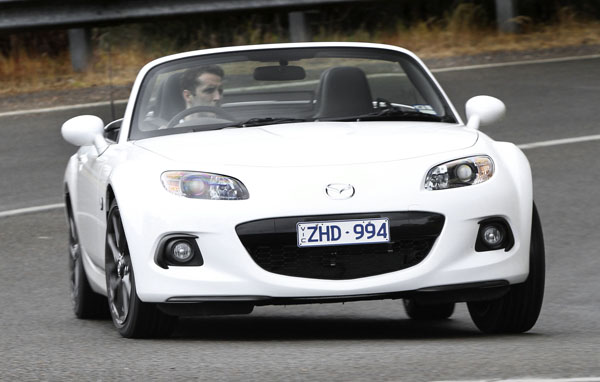
2012 Mazda MX-5
So popular did the folding hardtop become in Australia that imports of the soft-top
slowed, and ceased altogether towards the end of 2012. However, the soft top made
a reappearance with the ND Series, which is also offered in RF (Retractable
Fastback) format.
Note that engine power isn’t as impressive as the chassis dynamics. Serious owners
like it like that, saying that getting the best from the car is what they love.
If you’re into traffic-light Grand Prix starts you may find yourself getting beaten by
some fairly ordinary cars. So, if the other driver suggests you do so by moving
slightly forward a couple of times during the red-light period – ignore them.
A 2.0-litre engine was introduced in the 2005 NC Series MX-5. Updates to the
engine in 2009 and again in 2012 saw it able to rev to higher numbers. Low down
grunt was improved at the same time, which is something that’s not always easy to
do.
The ND series was the first to offer engine options, a 1.5- and 2.0-litre. The 2.0 got a
major makeover to increase engine power in August 2018.
Half the fun of driving a little roadster like this is rowing it along on the gearbox, going
for the right gear at the right time to make the best of the engine’s relatively limited
torque and power.
The gearchange on the Mazda MX-5 is a sweet unit with short positive changes that
not only work well but feel great at the same time.
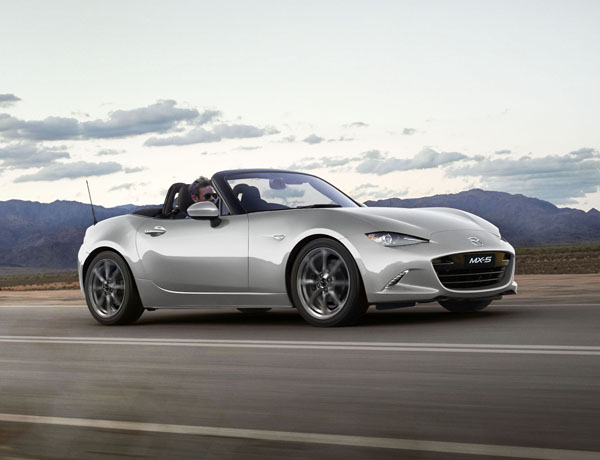
2018 Mazxda MX-5 RF
Earlier manual gearboxes were five-speed units, a six-speed manual is fitted in all
models covered in this feature.
An automatic transmission with six forward ratios became an option with the
introduction of the ND series in 2005. Sporty programming of its electronics means
it’s not far short of a manual in driving pleasure. But give us a ‘proper’ manual any
day!
It’s fairly easy for a good amateur mechanic to work on and spare parts are normally
reasonably priced.
The Mazda dealer network isn’t huge but works effectively and we have heard of no
real complaints about spare parts availability. Smaller dealerships in the more
remote country areas may not stock all parts.
Insurance can be expensive, particularly for young and/or inexperienced drivers so
it’s worth shopping around to get the best deal. As always, make sure you
understand what you are getting – or not getting.
WHAT TO LOOK FOR
It’s probably best to keep clear of MX-5s that have been used in lap dashes at race
tracks or in rallies – unless, of course, you’re planning to take part in the fun yourself
and need the necessary safety mods.
One that has been on a track can often be recognised by tyre scrubbing (though
different tyres may have been used on the track), a roll cage, fire extinguisher or
extra instruments.
Heavy deposits of brake dust on the callipers and the inside of the wheels may be a
sign of racetrack use, or simply of hard on-road driving.
In early models look for stitching that’s worn or broken in the soft-tops.
Discolouration in the plastic rear window in early models ruins the looks, but isn’t
overly expensive to replace.
A glass rear window was used from the NB Series onwards and is probably the best
choice for all but the purists.
Look for crash damage that’s been repaired, indeed it may be very wise to call in a
professional if you are in any way suspicious.
Be suspicious of water stains on the seats and trim, check under the carpets for
dampness or rust as the MX-5 may have been caught with its top down in the rain.
The engine should start easily, idle reasonably smoothly and not blow smoke from
the exhaust under hard acceleration.
The gearbox should be light and positive in its change action and not baulk or crunch
even on the fastest of changes. The third-second change is usually the first one to
suffer.
HOW MUCH?
Expect to pay from $5000 to $9000 for a pre-2010 Mazda MX-5; $9000 to $14,000
for a 2011 Roadster; $11,000 to $16,000 for a 2012 Touring convertible; $15,000 to
$22,000 for a 2104 Sports Roadster or a 2016 GT; $18,000 to $25,000 for a 2015
25th Anniversary convertible or a 2017 GT; $20,000 to $27,000 for a 2016 RF GT;
$23,000 to $31,000 for a 2018 GT; $27,000 to $36,000 for a 2019 RF GT; and
$34,000 to $46,000 for a 2020 GT RS.
CAR BUYING TIP
Thinking of buying a sporty car and using it at a track? Check on Google for clubs
that have the sort of car you’re thinking of buying and give them a ring.
RECALLS: To browse recalls on all vehicles go to the ACCC at:
www.productsafety.gov.au/products/transport/cars/




